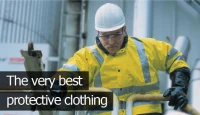 Harnessing fire has helped the human race evolve from a group of cave dwelling, hunter-gatherers to the dominant race on the planet.
Harnessing fire has helped the human race evolve from a group of cave dwelling, hunter-gatherers to the dominant race on the planet.
When homo-erectus first discovered fire, who could have known that they started a journey of innovation that has resulted in inventions such as computers, nuclear power and even space flight?
This journey really accelerated when we began to understand what fire really was. The next two posts will investigate the nature and the properties of fire itself.
What is fire?
Fire is the tangible result of matter changing form, a chemical reaction. This reaction occurs between oxygen and one or more sources of fuel e.g. wood or petrol. It doesn’t just spontaneously occur (despite the name, spontaneous combustion isn’t really spontaneous,) the fuel needs to reach its ignition temperature.
This is where the ignition source comes into play, bringing the fuel up to its optimum ignition temperature and starting a chain reaction that results in a fire. This trio of elements forms the fire triangle – something each of us should recognise from our school days.
When a fuel source reaches its ignition temperature (this varies depending on the fuel,) in an oxygen rich environment we get a fire.
Fire in action
A wood fire is one of the most common and recognisable so lets take a closer look at what’s going on in there.
-
First we need an ignition source. This can be anything from friction to a lightning strike. This brings the wood up to about 150˚ C (degrees centigrade) and starts to decompose the cellulose in the wood.
-
 Some of this decomposing material is released as volatile gases, commonly known as smoke. Smoke is a combination of hydrogen, carbon and oxygen, what is left is the char, which is mostly carbon and ash. The actual burning happens in two parts.
Some of this decomposing material is released as volatile gases, commonly known as smoke. Smoke is a combination of hydrogen, carbon and oxygen, what is left is the char, which is mostly carbon and ash. The actual burning happens in two parts. -
Firstly the compound molecules that make up the gases break apart when they reach around 260˚ C and recombine with the oxygen to form water, carbon dioxide and a few other products. This is the wood burning.
-
Secondly the carbon in the char combines with oxygen to make charcoal, an extremely useful product.
The results of a fire
When we think about fire it conjures up images of destruction but fire can also be harnessed as a creative force – just look at the internal combustion engine or any power station today. A by-product of the chemical reactions taking place is a great amount of heat and light energy.

The chemical energy held in the oxygen and fuel is released as heat energy, causing the carbon atoms to vaporise and rise into the air as they become less dense. These atoms release light and form the visible flames of the fire. This light produced by heat effect is called incandescence and is similar to the way a light bulb creates light.
The way a wood fire starts and continues to burn is an atypical reaction and at its core is stable and similar to the way most fires burn, however there are many variables in the ignition of a fire and these variables can make turn a fire into a very different creature. Next time we will explore these variations as well as the multitude of different ways man has harnessed fire.

